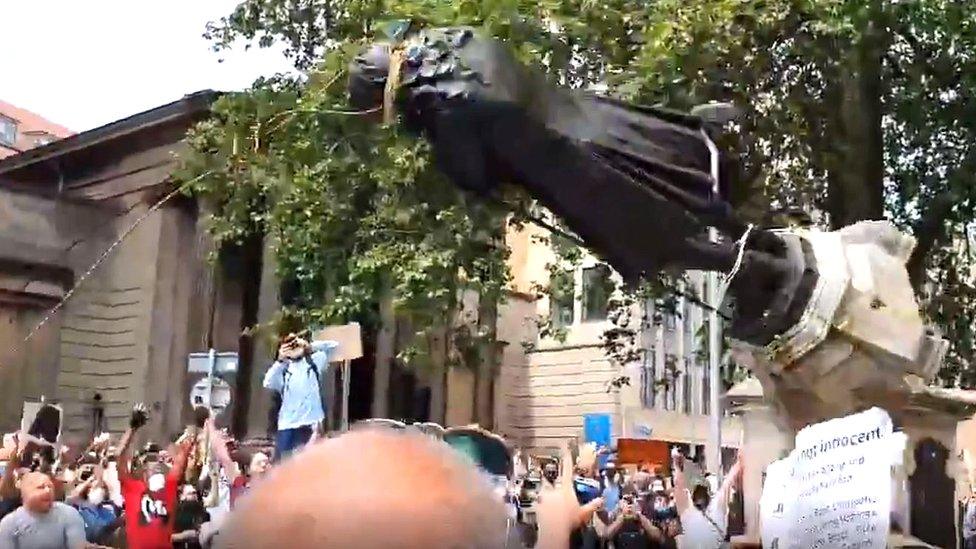How a slaver's memorial ended up in a Dorset church
- Published
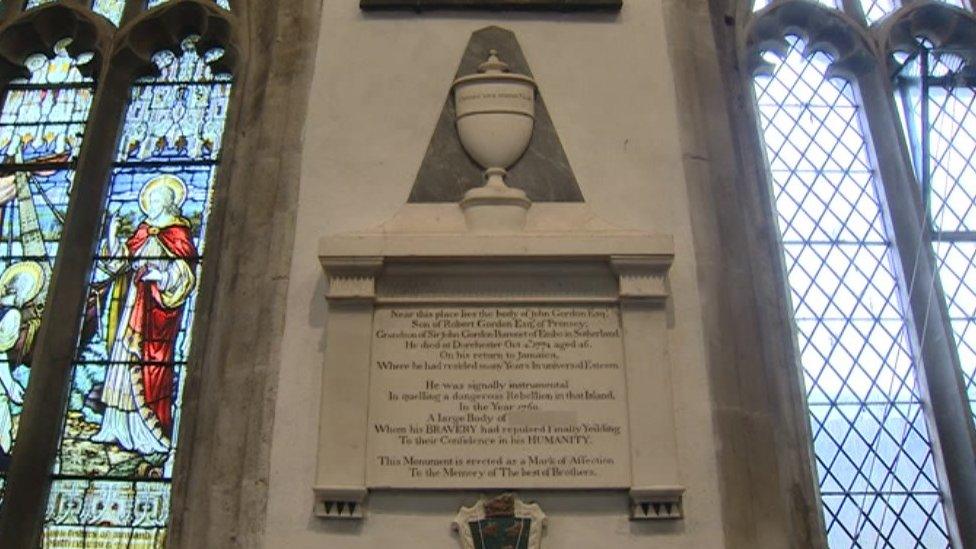
People have been leaving negative comments in the visitors' book about the memorial
Why a plaque celebrating one man's role in the deadly suppression of a slave rebellion in Jamaica came to be on the wall of a Dorset church is not entirely clear.
But the memorial stone marking the exploits of 18th Century plantation owner John Gordon will now be removed from St Peter's in Dorchester following a vote by church leaders.
The plaque commemorates Gordon and his role in Tacky's War, a slave rebellion in which hundreds were killed.
Scottish-born Gordon owned more than 400 slaves who worked on his plantations in Jamaica. He died in Dorchester in 1774, aged 46, after returning to England to write his will.
It is not known why he visited the town ahead of his planned return to the West Indies but, nonetheless, he was buried at the church and a memorial was erected.
The inscription uses offensive language and praises Gordon for being "signally instrumental in quelling a dangerous rebellion".
Campaign group Stand Up To Racism Dorset had called for the plaque to be removed or at least concealed.


The Jamaican slave uprising was brutally suppressed
Tacky's War
The uprising from April to July 1760 was led by a former West African chief who had been sold into slavery by rival leaders following his army's defeat in modern-day Ghana.
Tacky and his men began taking over plantations and killing the owners, with hundreds more slaves joining the revolt as it spread to other estates.
Mounted militia moved to suppress the uprising and Tacky was shot, beheaded and his head displayed on a pole. Others faced horrific executions.
The rebellion continued to inspire further uprisings across the island, all of which were brutally suppressed.
By the time order was restored many months later, between 400 and 500 slaves had been killed and many hundreds more were transported and re-sold.
About 60 white people lost their lives.
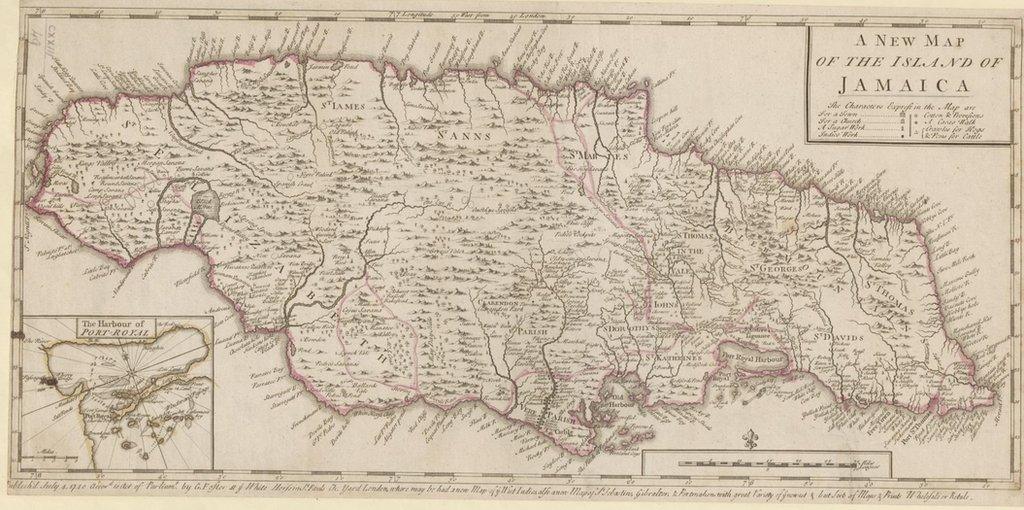
The slave rebellion of 1760 began on Easter Monday near the northern town of Port Maria

In a statement to the parish council, the group said: "The plaque is nothing to do with history or education. It is about what we are supposed to admire and revere.
"It is an approving commemoration of an event - the suppression of a revolt by enslaved people, resulting in the deaths of around 450 enslaved people, some tortured and put to horrible deaths.
"Go in any church and you see monuments to the great and the good - many of whom got their wealth from slavery. But this is different. It is a blatant and explicit glorification of white domination and the suppression of enslaved people."
Campaign group member David Rhodes, who also attends the church, said: "It has been there on that wall quite prominently for two and a half centuries and what bothers me is that people have got used to it. It has become normalised.
"Every Sunday the gospel of Jesus would be read more or less from underneath that plaque.
"It is offensive and has no place in public view."
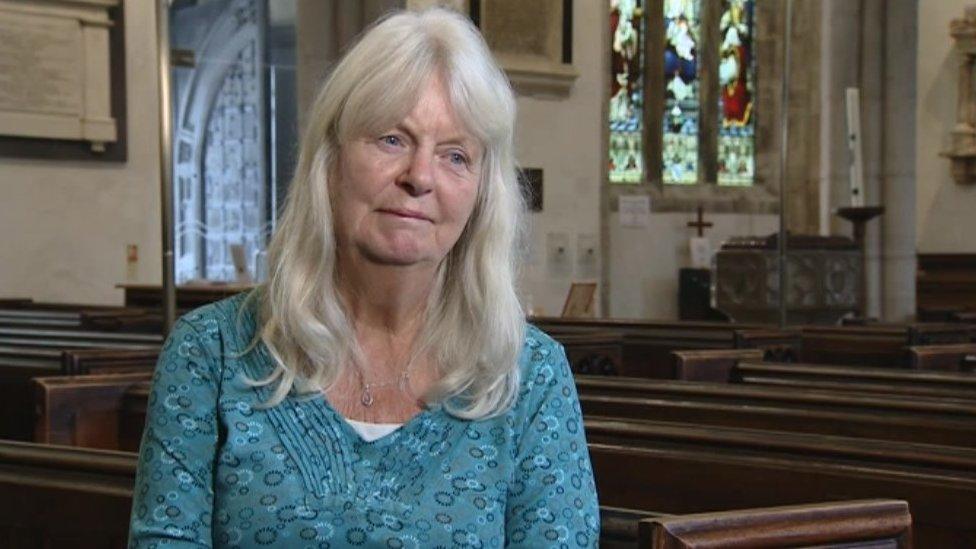
Church warden Val Potter said the plaque would be covered up before being removed
Church warden Val Potter said: "We are not going to destroy this monument but its story should be told in a museum rather than on a church wall.
"We've been aware of if for quite some time. The only negative comments we get in the visitors book in the church are of that monument.
"The intention was always to put some kind of notice up next to it so we are really pleased that the Black Lives Matter movement raised the sense of urgency."

A notice was placed under the stone while church leaders considered its future
- Published24 September 2020
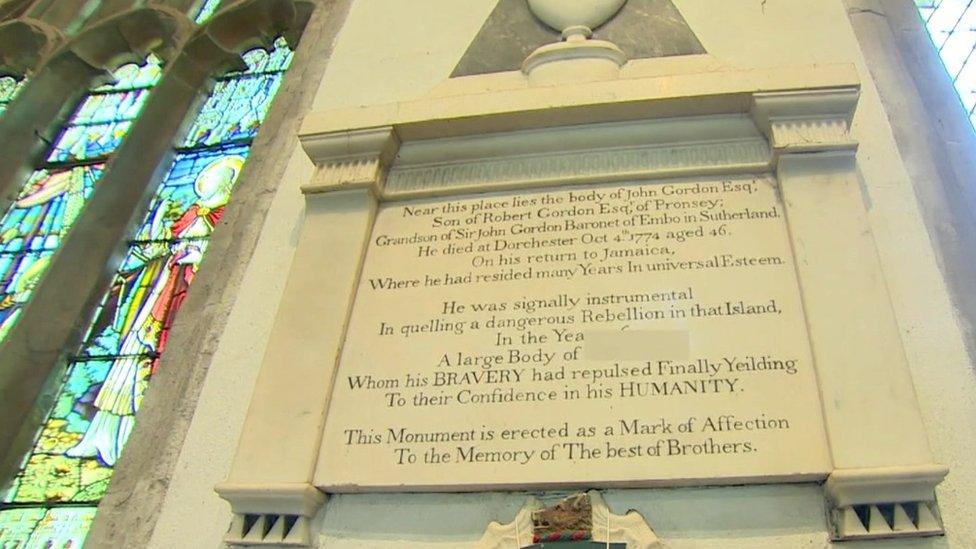
- Published7 July 2020
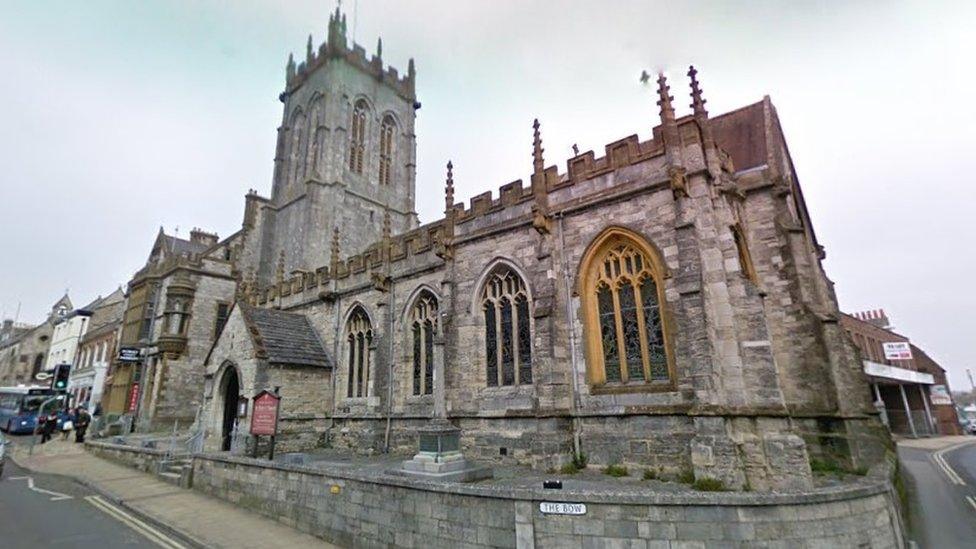
- Published8 June 2020
